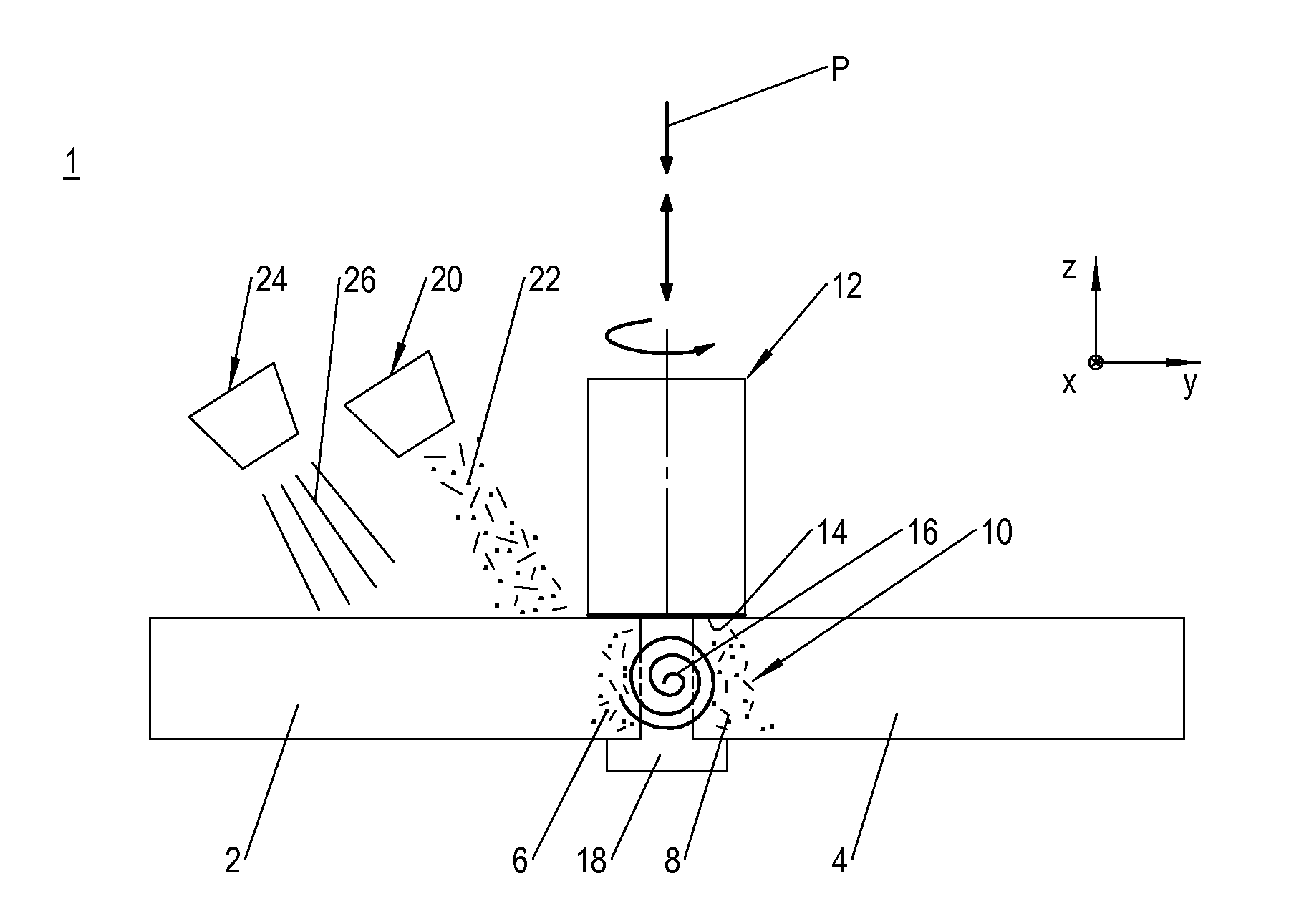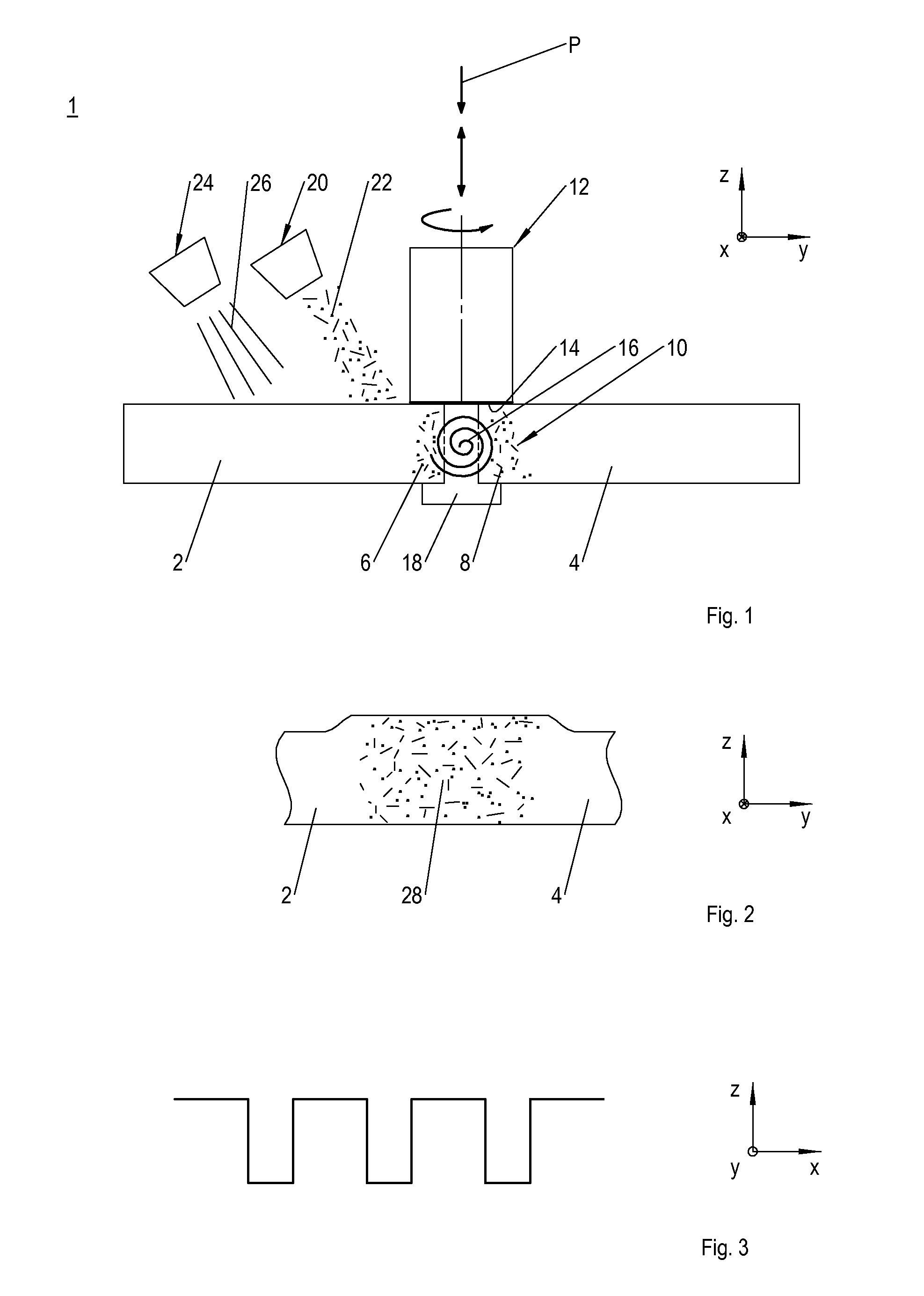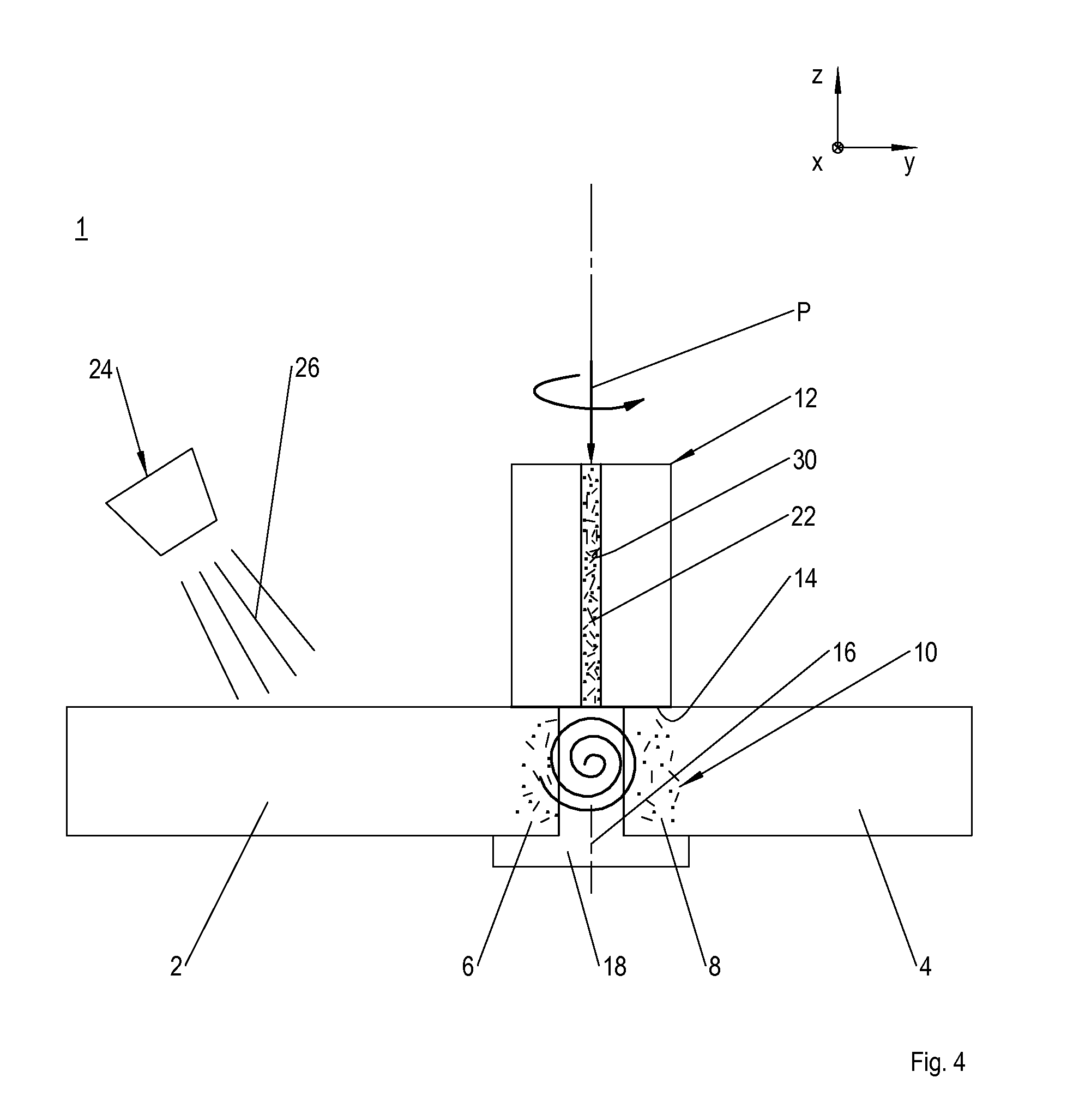Method and device for bonding parts to be joined, as well as component
a technology of bonding parts and components, applied in the field of method and device for bonding parts to be joined, as well as components, can solve the problems of high time consumption of riveting methods, increased cost of riveting methods, so as to improve the strength of joining seams, short cycle times, and optimized weight
- Summary
- Abstract
- Description
- Claims
- Application Information
AI Technical Summary
Benefits of technology
Problems solved by technology
Method used
Image
Examples
Embodiment Construction
[0025]FIG. 1 shows a first device 1 and a first method for bonding two parts to be joined 2, 4 into a component.
[0026]The parts to be joined 2, 4 are positioned in the form of a butt joint and form a joining zone 10 with their opposing and contacting body sections 6, 8. For example, the parts to be joined 2, 4 form skin panels for aircraft fuselages that need to be joined to one another. The parts to be joined 2, 4 consist of fiber-reinforced laminates with a plurality of fiber structures such as non crimp fiber fabrics, woven fiber fabrics, prepregs and the like that are arranged in a layered fashion and embedded in a thermoplastic matrix. The fibers of the fiber structures consist of carbon fibers, glass fibers, aramid fibers and the like that are realized in the form of long fibers.
[0027]The device 1 has a friction stir tool 12 with a friction shoulder 14 and with a stirring pin 16. The friction shoulder 14 and the stirring pin 16 are able to rotate in the same direction about a ...
PUM
| Property | Measurement | Unit |
|---|---|---|
| Temperature | aaaaa | aaaaa |
| Melting point | aaaaa | aaaaa |
| Plasticity | aaaaa | aaaaa |
Abstract
Description
Claims
Application Information
 Login to View More
Login to View More - R&D
- Intellectual Property
- Life Sciences
- Materials
- Tech Scout
- Unparalleled Data Quality
- Higher Quality Content
- 60% Fewer Hallucinations
Browse by: Latest US Patents, China's latest patents, Technical Efficacy Thesaurus, Application Domain, Technology Topic, Popular Technical Reports.
© 2025 PatSnap. All rights reserved.Legal|Privacy policy|Modern Slavery Act Transparency Statement|Sitemap|About US| Contact US: help@patsnap.com



